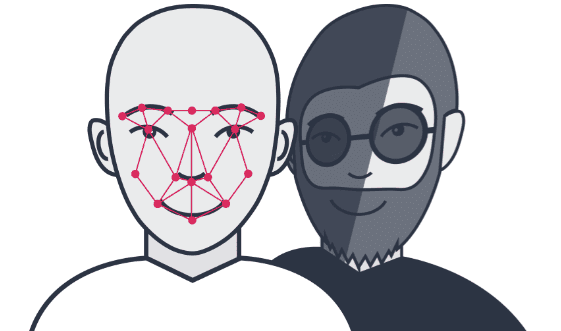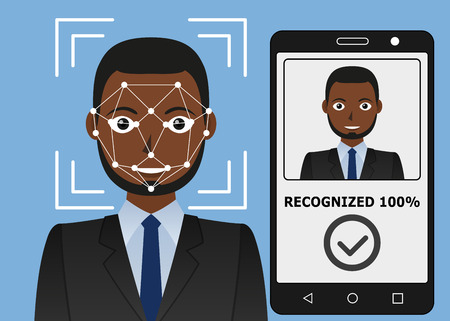
Expert in Camera Module Solution

Expert in Camera Module Solution

Facial Recognition
Facial recognition technology was always a mythical concept that we thought could be a tool that could solve many of our problems but would never see the light of day. Today, facial recognition is everywhere and is a part of the everyday technology that we use. The iPhone’s, the OnePlus smartphones, Amazon Rekognition and even Facebook is big on face recognition and image tagging. It has moved from being a fictional concept to being a part of our everyday lives.
How does Facial Recognition Work?
Facial recognition is a variation of biometric software that can verify or identify a person through a digital image. This is done as the software mathematically maps out their features and saves this information like a fingerprint. Deep Learning algorithms are put to use to ensure that the individual’s identity is not mixed up and is got right every time.
In order to recognize correctly, the facial recognition software performs 3 key steps:
1) Detect the face
2) Scan and create fingerprints
3) Match and Verify
Think of it as a visual search engine. Even in a very busy or crowded environment, the technology makes use of key factors to identify the right individual. The applications of facial recognition can be across multiple domains and based on how you use it, it may work really well for you or may not work at all.
Let’s have a look at some of the applications of facial recognition:
1. Security and Identity Management
Countries like the US and Australia have built huge databases of their residents by registering them through their driver registration or through a compulsory registration. The US has a database that has 117 million on it. It is one of the largest databases in the world. This helps them keep track of the identities of their residents and seek out the illegal immigrants. The Aadhaar initiative in India was done on the back of having a digital database. China has facial recognition systems all over the country to prevent their residents from jaywalking at intersections.
When it comes to the question of security, facial recognition software can read expressions and emotions and can even thwart or apprehend suspicious activity. The railways, airports and other areas of vulnerability can be kept safe with facial recognition.

2. Retail / Emotion & Sentiment Analysis
Systems today accurately show the facial expression detection and can measure key emotions frame by frame. Along with this attention, engagement and consumer sentiment (positive/negative) can be measured.
Human emotion is recognized from facial expressions by these emotional recognition systems. Take the case of a retails store, repeat customers can be recognized by the software and prompt the sales people to greet them by name, thereby enhancing their shopping experience.
3.How Marketing Benefits
We humans have the ability to distinguish clearly between two individuals. Computers’ being able to do the same thing has been taken a step forward as they now tell us what catches the eye of a customer in a mall, a shop or even in a public space. Tailored marketing messages can be created for these spaces once customer segmentation is done This can be put to use even in the digital space. Conducting a market research with a pre-determined sample size where the participant’s expressions while browsing web pages or reading advertisements on the web can be monitored. This however will need to take place in a natural environment to yield good quality data.
4. In Healthcare
One of the greatest advantages of facial recognition is that it is contactless. This enables a wide range of applications to be possible. Identity management using genetic screening while checking into clinics, hospitals or other medical facilities becomes extremely easy. Authorization of transactions by insurance companies also becomes easier and much faster as the medical records can be fetched in seconds. Bringing telemedicine to the world can be a possibility as facial recognition can power emotion and sentimental analysis to work in mental healthcare environments.
5. The World of Finance and Authentication
Facial recognition can most definitely disrupt the point of sale payments, there would be no swiping of the cards and no waiting in queues. For the financial services industry, this would be a huge boon. Customers today are demanding digital solutions that are customer-centric. The need of today’s customer is to ensure security and deliver maximum customer satisfaction. As selfish as that may sound, facial recognition is the answer to it. Facial recognition can be used as second factor of authentication in mobile banking. ATM’s can use facial recognition for faster cash disbursement. In cases of senior citizens who need to provide proof of life to be eligible for pension, facial recognition would save the day.

A Few Things to Bear in Mind:
An advanced analytics technique as promising as facial recognition will definitely have a few glitches. Today, this technology leaves us wanting more in terms of accuracy. It hasn’t been tested to the level that is expected which leaves us thinking as to when it may malfunction.
Another issue with facial recognition may be privacy and consent. There are millions of laws across human rights, technological privacy and a lot more that need to be taken into account before implementing something like this. Acquiring consent while introducing this technology may be difficult. However with databases of Snapchat, Facebook and LinkedIn being at 200 million, 3 billion and 467 million respectively, this concern may not be insurmountable after all.
Facial recognition is just like how we used to talk about AI a few years back. Facial recognition software’s today are in fact powered by AI. The technologies that come out are not mutually exclusive but are actually built on top of one another.
Author: Stella